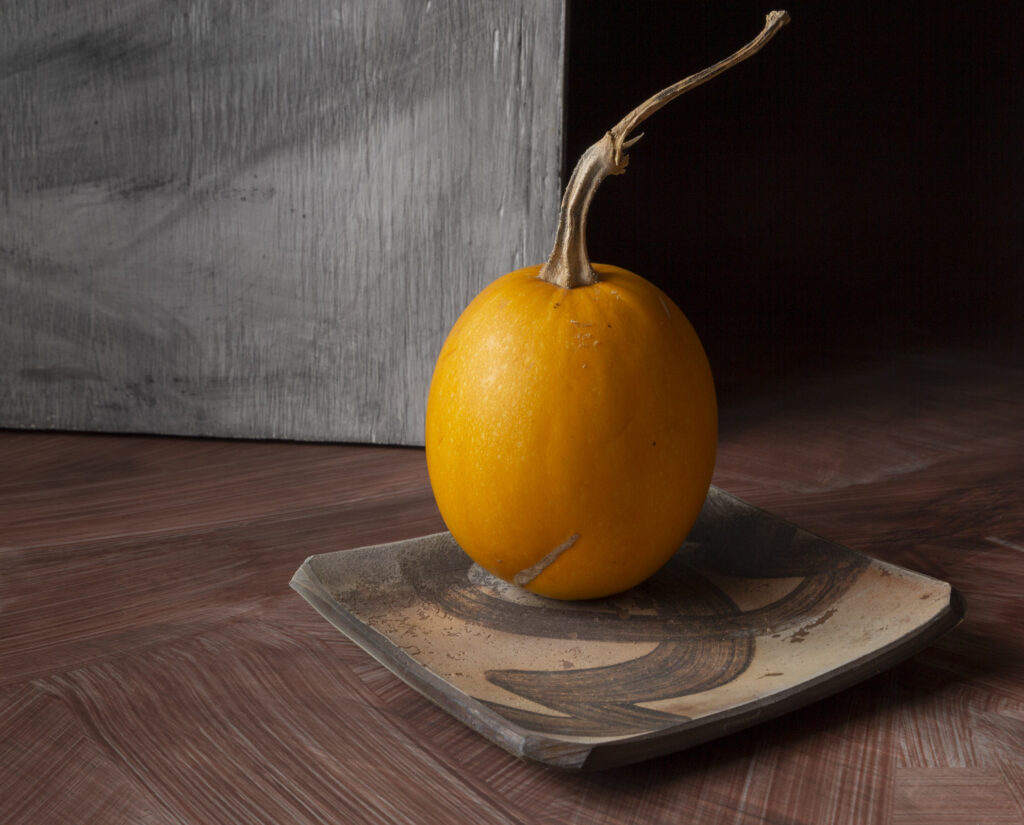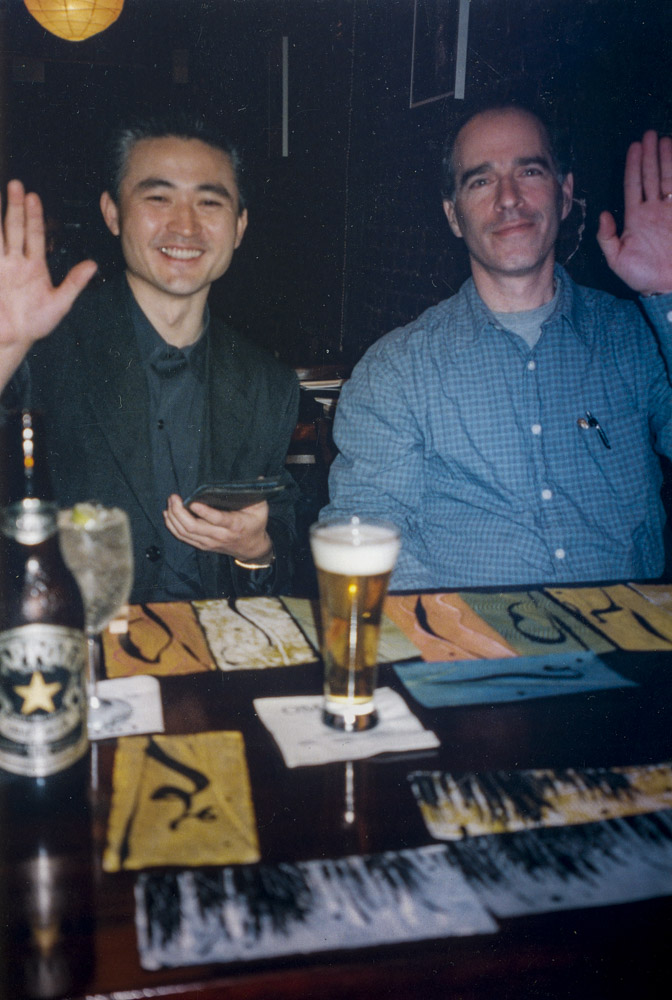Yesterday in my Zoom conversation about my exhibit at SHFAP in New York City, Beth Kaminstein asked me about color in my work. I replied that at one point Mikio asked me to make small paintings, four by eight inches, that he wanted to use to identify reserved tables not yet filled. On heavy, rough-edged, handmade paper I used acrylic paint and methyl cellulose to make the paint imitate how I use slip in my clay work. I painted loose images of grasses, fields, and a horizon line. The paintings were the same size as what I might make in clay for a small plate. Intrigued, I embarked on a little experiment using colored slips on white clay in our electric kiln. It was really fun, but I discovered I did not enjoy using the plates. I prefer a muted palette where the color is ever changing, created by the food one chooses.
I love this quality of beauty that has meaning and use beyond visual appreciation. These small paintings on handmade paper were like journal entries, representing my paths, the walks I took as if leaves from the book of my life. The nuance and texture of my marks were inscribed with my experience of the Virginia landscape. On a restaurant table they took on a new purpose.
When I remember the sharp coat of attention that Mikio wore at Omen I remember it as if in a trance. It is not just the photos that I have but the associated sensory details. He took so many opportunities to create beauty and connection through his many choices: hand painted menus, rough handmade lamps, his father’s calligraphy hanging on the walls, the particular pots or flowers scattered through the restaurant, the music in the background, and finally, of course, the food. All these memories remind me of the fragility of the moment.

Ambedo
noun: a kind of melancholic trance in which you become completely absorbed in vivid sensory details—raindrops skittering down a window, tall trees leaning in the wind, clouds of cream swirling in your coffee—which leads to a dawning awareness of the haunting fragility of life, a mood whose only known cure is the vuvuzela.
–John Koenig, in The Dictionary of Obscure Sorrows
